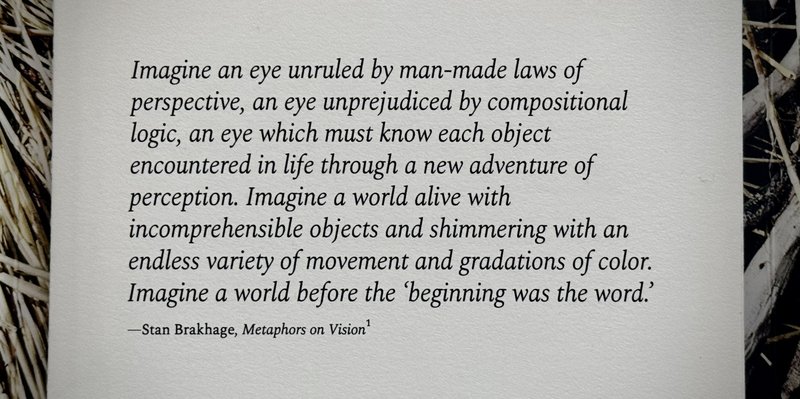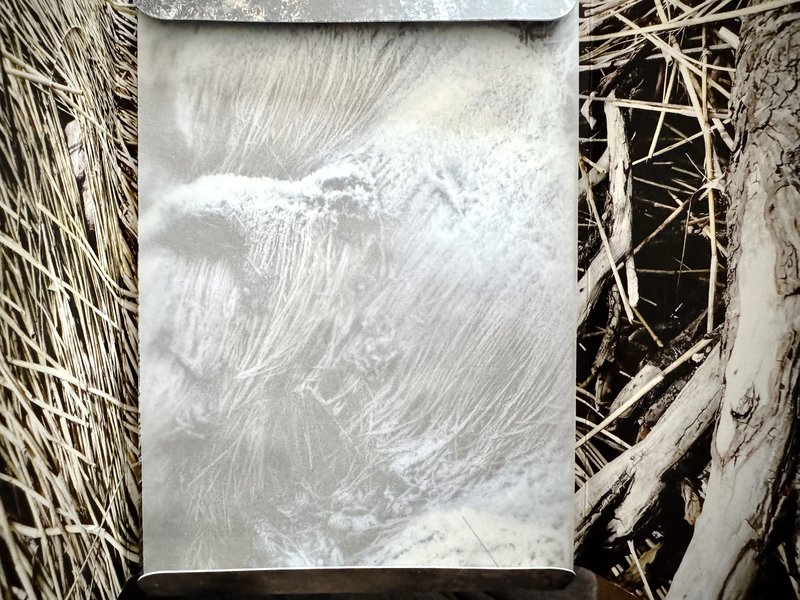Organic Abstraction

Abstract
A deconstructed photobook, an exhibition-in-a-box.

Organic Abstraction is designed for use in intimate settings – living rooms, hospital rooms, contemplative spaces. It can be viewed horizontally as a book and vertically as an exhibit – on walls, shelves, tables, or altars. While it can be seen as an art object that can be enjoyed by diverse audiences, it is first and foremost a gift for people we care about, and especially for those confined indoors (by weather, illness, conflict...).

Conceived during the early Covid 2019 lockdowns, Organic Abstraction acts as a reminder of wondrous yet easily overlooked lifeworlds existing in mundane surroundings; under our feet, around the corner, in the liminal spaces on the periphery of perception. Beings and landscapes that exist on scales other than human.

The photos were taken over two decades by three artists practicing the craft of noticing in their immediate surroundings. The artists' intention is to re-enchant the present by being attentive to animate matter that permeates all life – hinting at Hildegard von Bingen's viriditas, or Japanese kami.

This fascicle blurs boundaries between individual authors, between figurative & abstract, realism & impressionism, micro & macro scales. Ambiguity in this collection is a deliberate choice. Each fascicle contains a unique selection of loose, hand-cut cahiers in a custom designed slip-case.

Full text

Introduction by Branka Benčiċ

Suggestions for Use
Organic Abstraction presents itself as an unbound collection of photographs, each copy a unique arrangement of loose, hand-cut pages, housed in a custom slipcase. Conceived amid confinement and lockdown in late 2020, these images are a reminder of the wondrous yet easily overlooked lifeworlds that surround us; beneath our feet, around the next corner, at the edges of perception. They serve as an invitation to notice and behold the natural world on scales other than the human.
As three members of FoAM, we discovered these quotidian yet captivating subjects through a shared practice: the attentive, contemplative observation of our immediate surroundings – at home, in and around our studios, while travelling. Rather than following a predetermined project, the photos in this fascicle are snapshots of things that drew our attention, accumulating over two decades until patterns and parallels emerged, in both subject matter and sensibility.
Gleaned from our photo streams, the collection grew organically, becoming ripe for 'anarchiving' – a process of re-activating archived materials through deliberate selection and juxtaposition. In this fascicle, anarchiving means complicating boundaries and composing new landscapes: layering individual expressions and spatial scales, folding temporal and geographic distances, blending realism and impressionism in moments suspended between presence and absence. Ambiguity here is not just an outcome, but a creative choice.
Each of the hundred copies contains its own unique selection of loose, hand-cut cahiers. The playful process of collating these images led us to leave the photo book unbound, such that the process of anarchival recombination can continue in the hands of its readers.
We designed Organic Abstraction for intimate settings – living rooms, hospital rooms, contemplative spaces. While open to anyone, anywhere, it is first and foremost a gift for people we care about, especially those confined indoors – by weather, illness, or conflict. The process of noticing, photographing, and arranging these visual fragments has helped us navigate individual and collective turmoils. We hope this unbound fascicle can offer others a similarly therapeutic experience of encountering shared memories and reimagining future possibilities.

We invite you to create your own compositions with these pages, engage with them as either a book or an exhibit. Browse 'horizontally' as you might turn pages, or present 'vertically' by unfolding and combining pages across walls, shelves, tables, or altars. Or perhaps you'll find your own arrangements. We welcome and encourage images of Organic Abstraction in new habitats – your bookshelf or bedroom windowsill, alone or combined with other objects or vistas. Through such sharing, these images can continue their care-full journeys from room to room, across times, scales and continents.
We look forward to hearing from you,
—Maja Kuzmanović
Rasa Alksnyte
Nik Gaffney

Produced by FoAM, as part of the Anarchive
Published by Stichting Liminous
CC-BY-SA 2024 CE
Artists: Rasa Alksnyte, Nik Gaffney and Maja Kuzmanoviċ
Writers: Branka Benčić, Maja Kuzmanoviċ
Editor: Justin Pickard
Design: FoAM
Created within a tangle of FLOSS using Apache, Emacs, Etherpad, Gimp, Inkscape, Jitsi, LibreOffice, Mattermost, Nextcloud, Pandoc, Python, Scribus, Soupault, Zotero (etc) and held together with spare unicode.
Cahiers printed on Epson SureColor SC-P900.
Slipcase printed by Cassochrome in Ghent, Belgium. Paper: Arena Smooth White 350 gr.
Cahiers are printed, cut and folded by the artists on lustre, matt, metalic, satin and textured papers, including Hahnemühle Photo Rag Metallic 340 gsm, Hahnemühle Fine Art Baryta Satin 300gsm, Hahnemühle william turner 310 gsm, Illford Heavyweight 310 gsm, Illford Lustre 330 gsm, and Biotop 3 300gsm.
Typeset with Spectral and Bolkit.
With thanks to the FoAM network, and all the animate, inanimate and partially animate contributors who have knowingly or unknowingly been involved in the design and production of the Anarchive. This publication would not have been possible without you.











